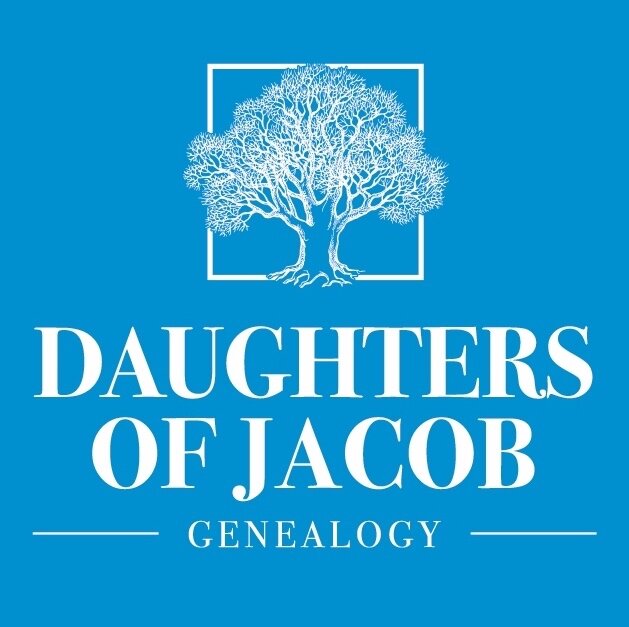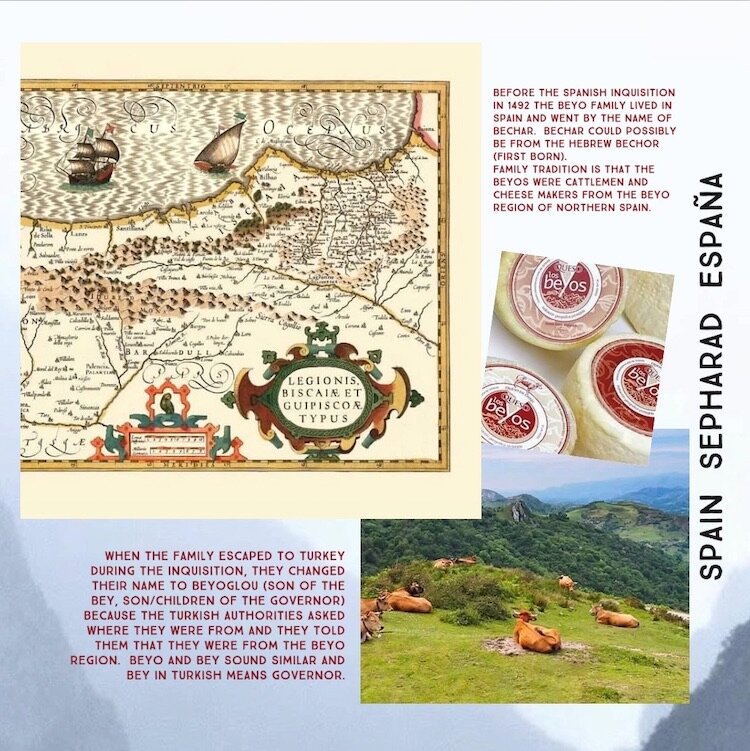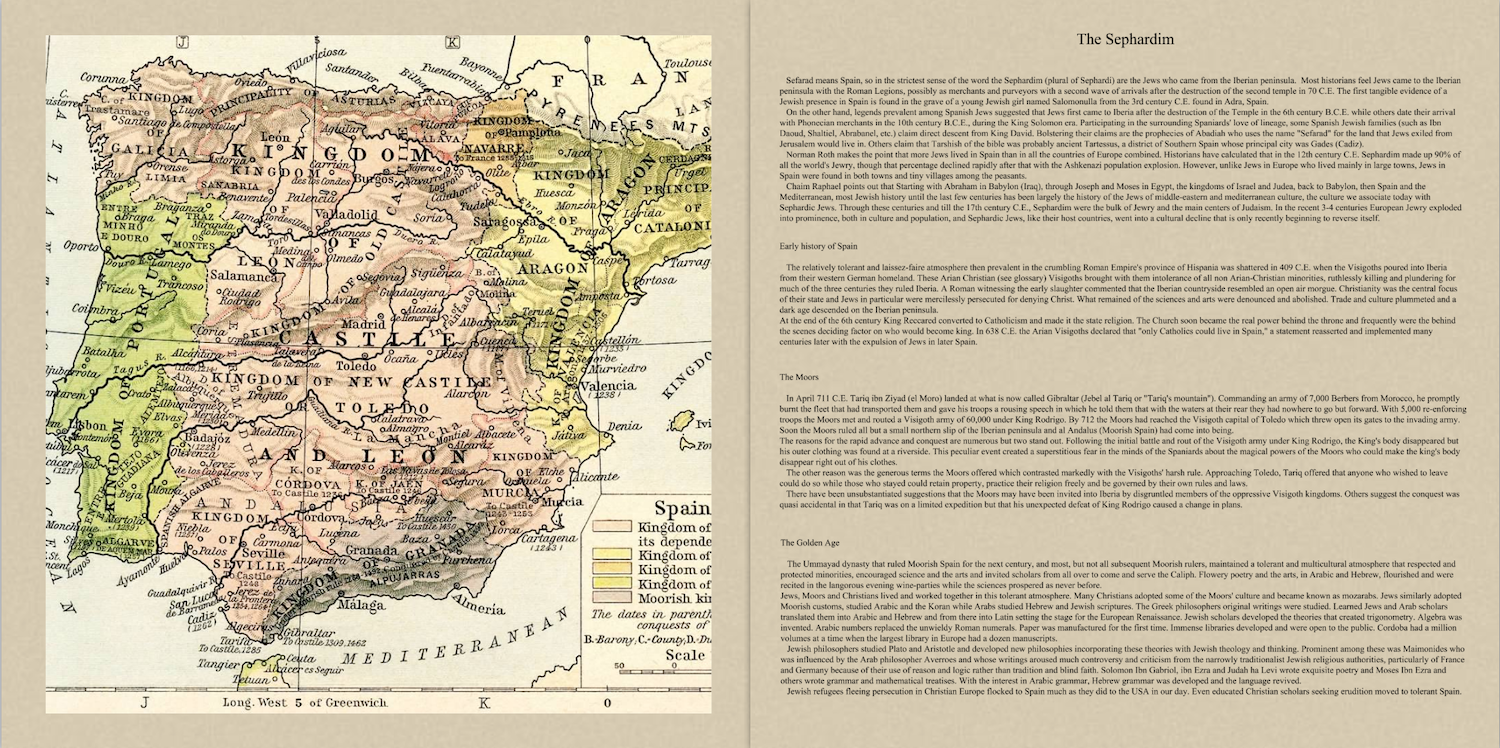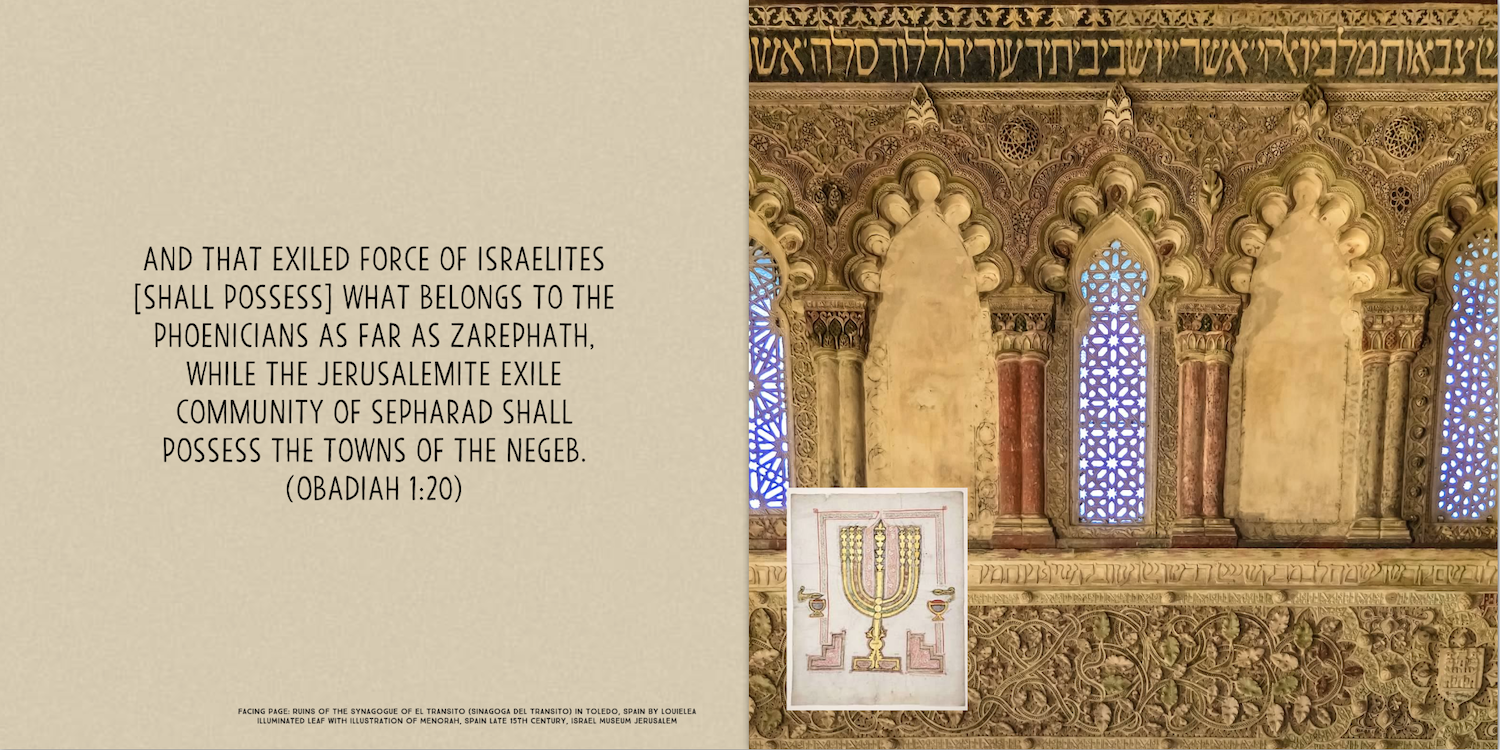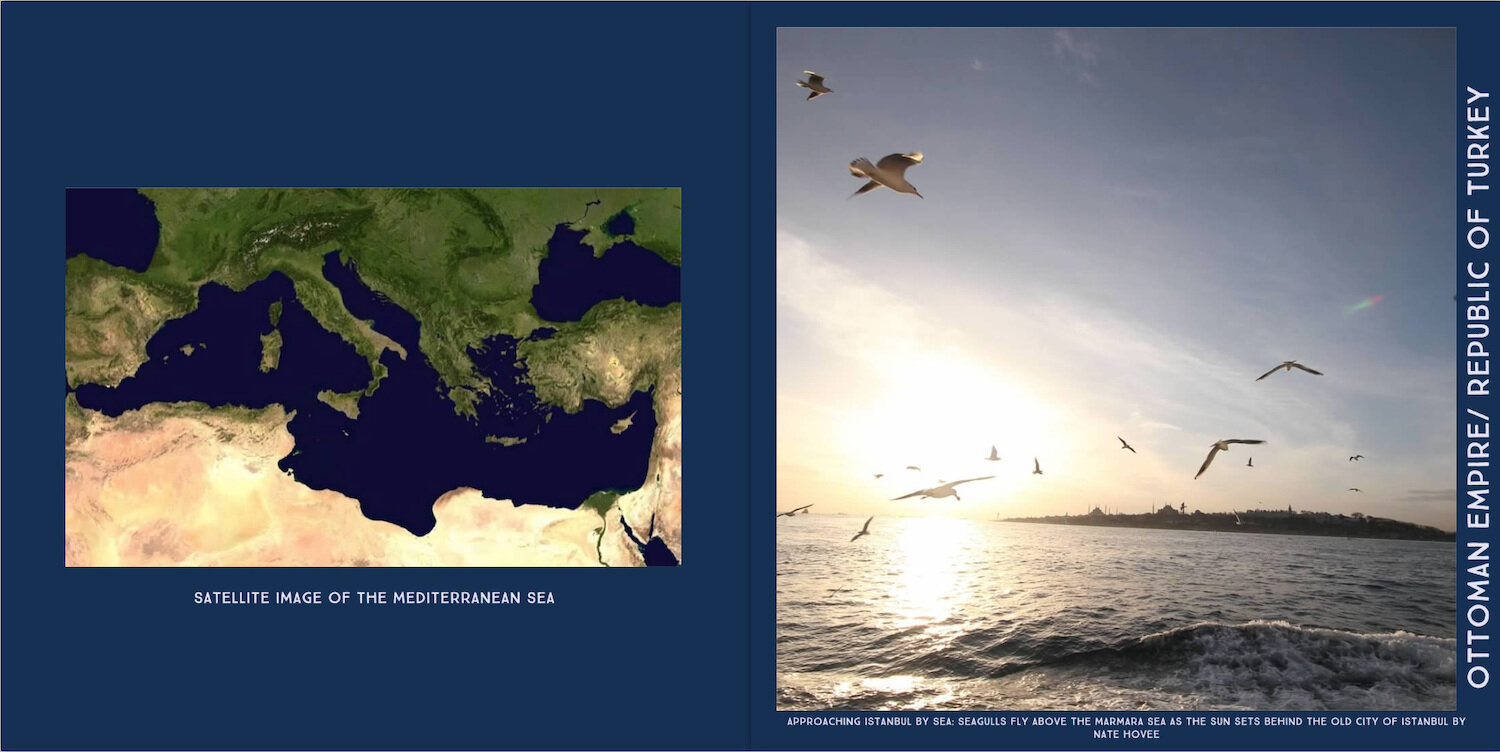Menorah from the late 1400s
Sephardim Pages
Welcome to our most extensive design gallery. If you are wondering what we can create from limited family information, these pages are an example. Here we highlight a series of pages about the Sephardic roots of Michael Beyo. He came to us with the following information rooted in family lore:
Before the Spanish Inquisition in 1492, the Beyo family lived in Spain and went by the name of Bechar. Family tradition is that the Beyos were cattlemen and cheese makers from the Beyo region of northern Spain. When the family escaped to Turkey during the Inquisition, they changed their name to Beyoglou (son of the bey, son/children of the governor) because the Turkish authorities asked where they were from and they told them that they were from the Beyo region. Beyo and bey sound similar, and bey, in Turkish, means governor.
Not surprisingly, we were unable to find firm genealogical documentation of these facts. However, as we did location research, the circumstantial evidence to support the family lore became compelling. Follow our journey through the images and notes below.
A sense of place
Research: Location research found that the Beyo region of northern Spain is centered around a dramatic canyon called Desfiladero de los Beyos.
Content: A simple landscape gives a sense place. Can you imagine being out with the family herd on a day like this?
Design: Contemporary, high definition, color photography gives the landscape immediacy. This is not a place from the distant past, but it is in the here and now. Family members who lived here over 500 years ago experienced it in their own here and now, as well.
Timelessness
Research: A period map and various names for Spain in the margin give a sense of the ancientness of this place.
Content: Despite the passage of centuries, the Bechar/Beyo family would probably feel right at home with these cows on the hillside.
Design: Deep red type provides a unifying sense of bold personality throughout the book. Notice the color continuity between the text on the page, the deep reds on the map, and the cheese wrappers. The backdrop is from the landscape on the previous page.
Note: These pages were reformatted from a rectangular layout to a square layout to be consistent with our current product line. Thus, the map is cut off in this image. The entire map is seen in the original book.
Cherished Home
Research: The previous map placed this area in historical context. This map brings it into the present day, showing its current status as a national park.
Content: It is easy to see how the memory of this beautiful place has lingered through the generations in this family. One wonders if they lived in a home like the ones on this page.
Design: Once again, the background for this page is from the first landscape. The colors from a landscape of an area tend to harmonize with other photos of the area. Also, the deep red of the text is echoed again in the national park map.
Family Lore
Research: It is amazing how many helpful clues hide in family lore, such as the family tradition that the Beyos were cattlemen and cheese makers from the Beyo region of northern Spain. Confirming details like this help us know we are in the right place.
Content: Another period map of northern Spain provides broader context for the location. The Queso de Los Beyos website page gives insight into the family trade.
Design: The unifying elements of the background and the deep red give continuity to this section of the book, making for smooth transitions between pages. The cheese logo with a slice of cheese cut out of the center of the letter y echoes the shape of the Beyo gorge.
Touch of humor
Research: Yes, this goat really does live in this park. We named him Raul. He makes us laugh.
Content: The family’s ancestors may well have cherished this view. Maybe they knew the goat’s great-great-goat-fathers.
Design: On this spread we get a reprieve from the busy layout and bold reds of the previous pages. Spreads such as this one counterbalance more information-intense pages and make the book feel open, relaxed and inviting.
Broad View
Research: This spread features a map of the entirety of Spain at the time of the Jewish expulsion, plus the first of three pages of detailed Sephardic history. The additional two pages of text are not shown here.
Content: The map of Spain, 1212-1492, takes our minds back to our earliest knowledge of the family’s history. The text on the facing page fills in the context.
Design: The focus on this page is information. The colors are muted and the layout simple to let us focus on the information presented.
Note: in this image, the map has been cropped to fit the square page format, just as the map in Timelessness, above.
Visual Time Travel
Research: This page transitions from a focus on facts to a focus on visual history.
Content: The photos give us a visual taste of Sephardic culture in Spain in the 1400s via the elaborate designs on the synagogue wall and in the inset illuminated manuscript.
Design: After four intense pages, this is another rest page, with minimal text, simple layout, and muted colors. This allows us to relax and focus on the intricate designs.
Soft Landing
Research: This and the following spread build on information about the migration of Sephardic Jews in the Middle Ages.
Content: The satellite map on the left literally gives us the big picture of their journey. The image on the right would have been their first view of Istanbul.
Design: This is another soothing spread before several more intense pages. The gulls visually escort us to the calming horizon lines of Istanbul, just as they may have physically escorted the refugees’ ship over 500 years ago.
Sultan’s Welcome
Research: More information is presented on this page regarding the Sultan’s invitation to the Jews to settle in his empire, complemented by paintings of that sultan and one of his ships.
Content: This modern photo of old Istanbul is taken from the perspective of the family’s ancestral home in the Jewish settlement of Galata, across the river from Old Istanbul.
Design: Reds return on this page, but not the deep reds of before. Here, the red of the Sultan’s robes match the red on his ship and the bridge to Old Istanbul. The blue in the background is a favored hue in Turkish culture. The bold page layout is balanced by the calming sunset and horizontal lines.
